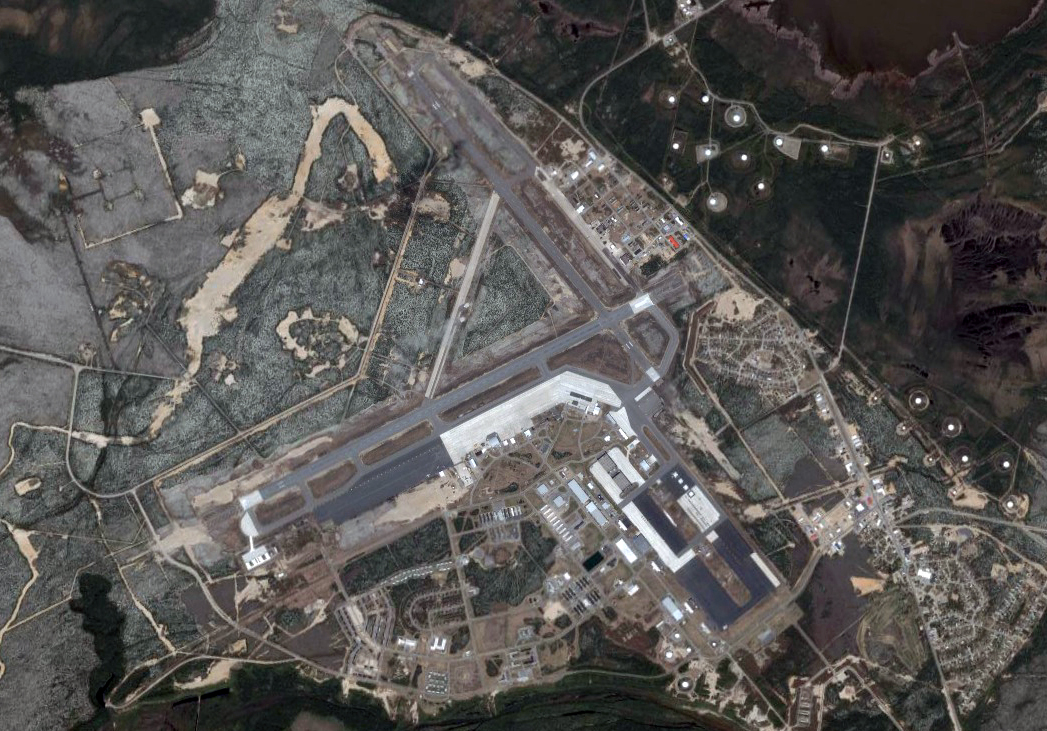Tuesday, 22 January 2019
UFO Case Directory (RADCAT):
“Green & Red Object Circles Jet,
Tracked on Radar (BBU 3969)
Feb. 12, 1956
SW of Goose Bay, Labrador”
(NICAP.org)
The whole UFO case report:
“Dan Wilson:
At 10:55 local time two F-89’ s were on a routine training
mission when one fighter (with pilot Bowen and radar observer Crawford) had
visual and radar contact with an object which rapidly encircled the the F-89D.
The color of the object was predominatley green with red and seemed to be
flashing. The object was estimated to be 3/4 mile away and was observed for
about one minute. The other fighter aircraft also had radar contact. About 15
minutes later an object was observed on radar 38 miles SW of Goose Bay
by aircraft controllers. No movement. The fighters were vectored upon the
object and had radar contact but faded when the aircraft got within 8 miles . (Berliner; FUFOR
Index)”
NICAP.org presents U.S.
Wikipedia article: “CFB Goose Bay
Quote from the Wikipedia article:
“Canadian Forces Base Goose Bay (IATA: YYR, ICAO:
CYYR), commonly referred to as CFB Goose Bay, is a Canadian Forces Base located
in the municipality of Happy Valley-Goose Bay in the province of Newfoundland
and Labrador. It is operated as an air force base by the Royal Canadian Air
Force (RCAF). Its primary RCAF lodger unit is 5 Wing, commonly referred to as 5
Wing Goose Bay.
Cold War history
1950 – The Rivière-du-Loup Incident
Goose Air Base was the site of the first US nuclear
weapons in Canada, when in 1950 the United States Air Force Strategic Air
Command stationed 11 model 1561 Fat Man atomic bombs at the base in the summer,
and flew them out in December.[12] While returning to Davis–Monthan Air Force
Base with one of the bombs on board, a USAF B-50 heavy bomber encountered
engine trouble, had to drop, and conventionally detonate, the bomb over the St.
Lawrence, contaminating the river with uranium-238.
1954 – Construction of the Strategic Air
Command Weapons Storage Area[4]
Construction of Strategic Air Command's Weapons
Storage Area at Goose Air Base was officially completed in 1954.[13] The area
was surrounded by two fences, topped with barbed wire. It was the highest
security area in Goose Air Base and comprised
* One guard house
* One administration building
* Three warehouses (base spares #1, base spares #2,
supply warehouse)
* Six guard towers
* One plant group building
* Five earth covered magazines for non-nuclear weapon
storage
* Four earth covered magazines for ‘pit’ storage
(constructed with vaults and shelving to store pit ‘birdcages’)
Design and layout of the Goose Air Base weapons
storage area was identical, with only slight modifications for weather and
terrain, to the three Strategic Air Command weapons storage areas in Morocco
1958 – Construction of the Air Defence Command
ammunition storage area[4]
Construction of the Air Defence Command ammunition
storage area at Goose Air Base was completed in 1958.[15] This extension to the
Strategic Air Command weapons storage area was built directly beside the
previously constructed area, with a separate entrance. The buildings built
within the area were:
* Three storage buildings
* One guard house
* One missile assembly building.
The storage was being built to accommodate components
of the GAR-11/AIM-26 "Nuclear" Falcon, which is normally stored in
pieces, requiring assembly before use.
1976 – Departure of the USAF Strategic Air
Command and closure of Goose
AB
The former U.S.
facilities were re-designated CFB
Goose Bay Canada
Hosted deployments of units from:
Royal Air Force (United Kingdom
Wikipedia article: “Northrop F-89 Scorpion”:
Quote from the Wikipedia article:
“The Northrop F-89 Scorpion was an American
all-weather interceptor built during the 1950s, the first jet-powered aircraft
designed for that role from the outset to enter service.[3] Though its straight
wings limited its performance, it was among the first United States Air Force
(USAF) jet fighters equipped with guided missiles and notably the first combat
aircraft armed with air-to-air nuclear weapons (the unguided Genie rocket).”
Related posts:
U.S. Air Force Northrop F-89D-45-NO Scorpion
interceptors of the 59th Fighter Interceptor Squadrons, Goose Bay AB, Labrador
(Canada), in the 1950s. 52-1959
in foreground, now in storage at Edwards AFB, California
(tageo.com photo)


